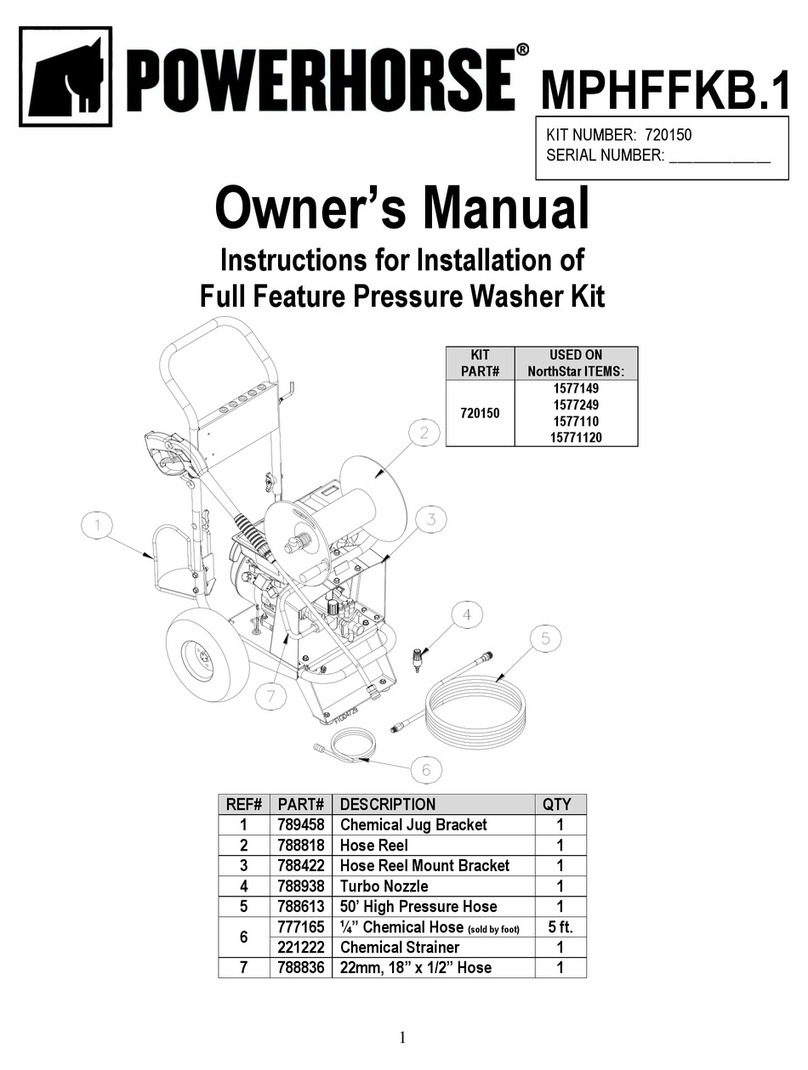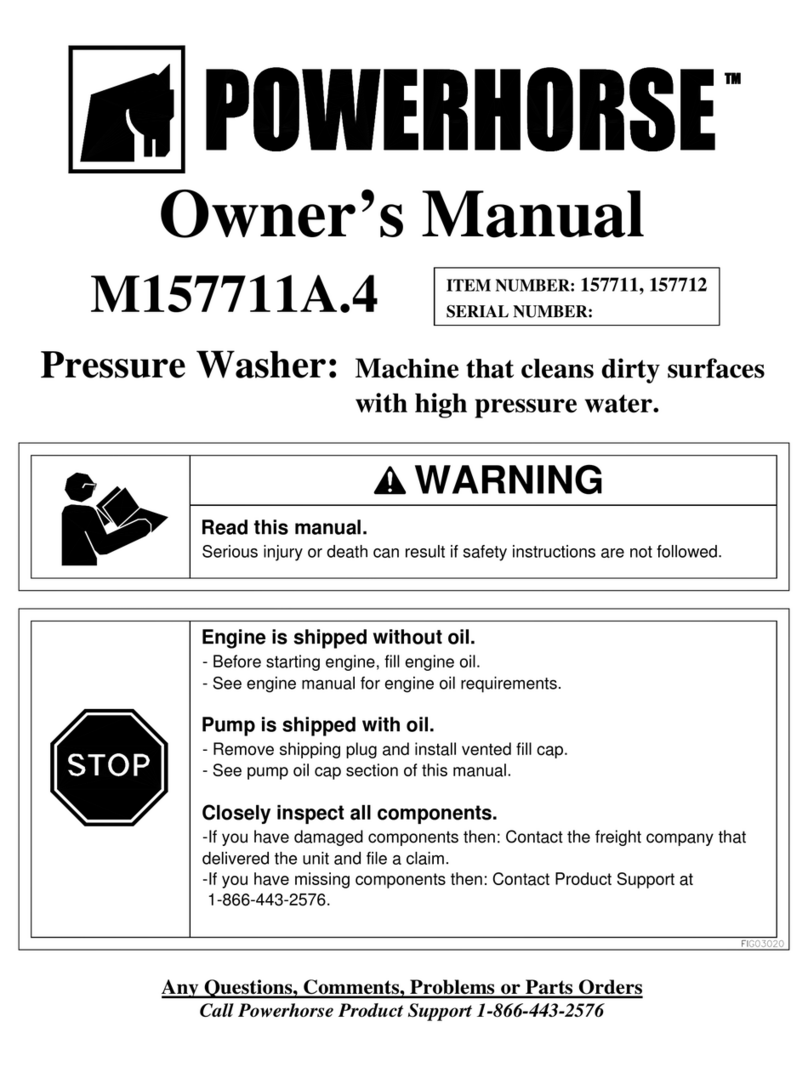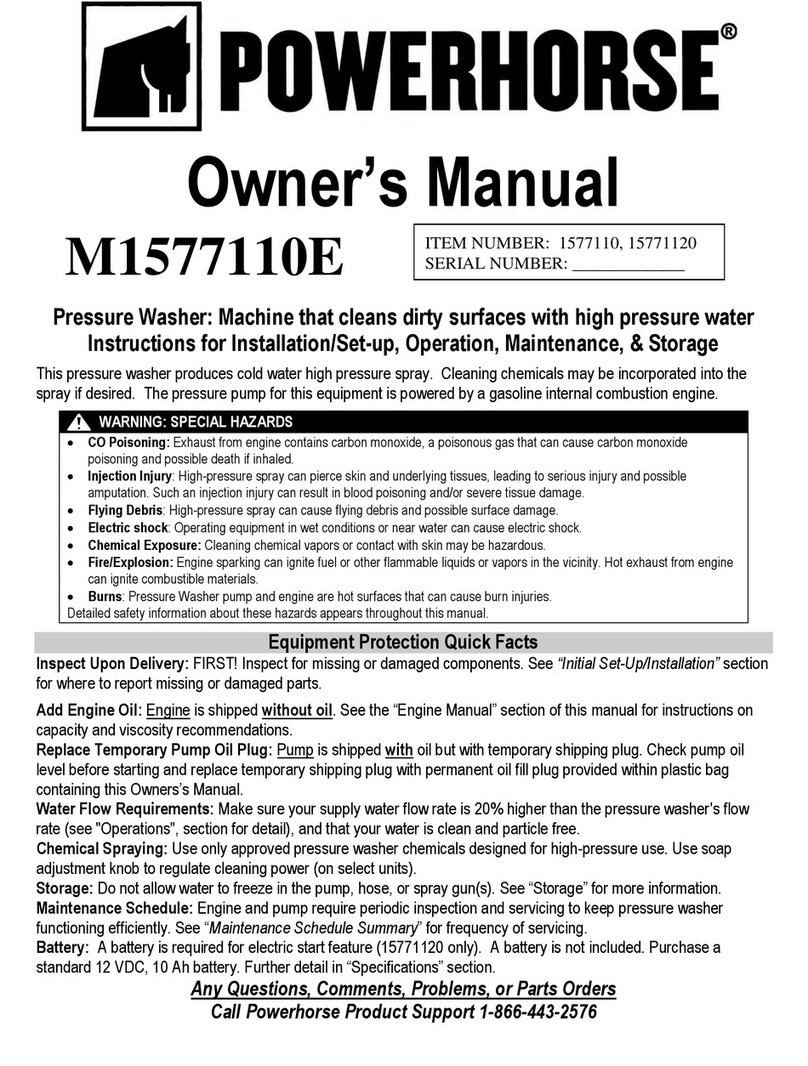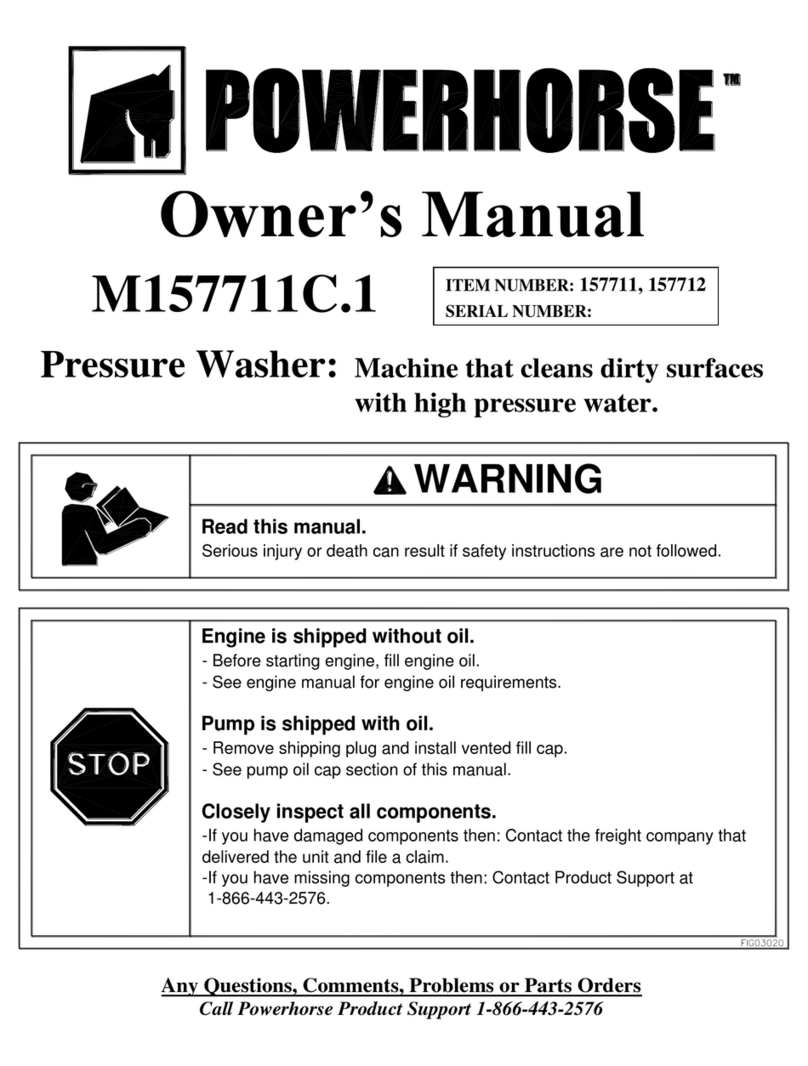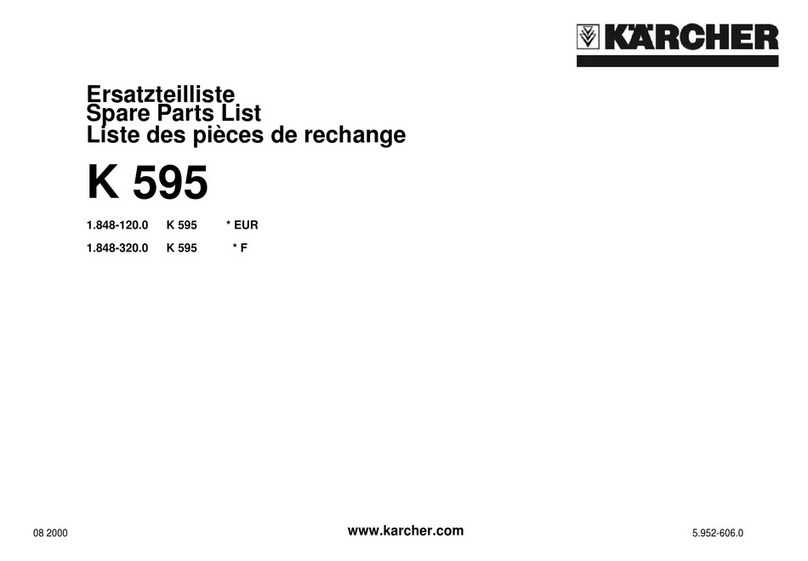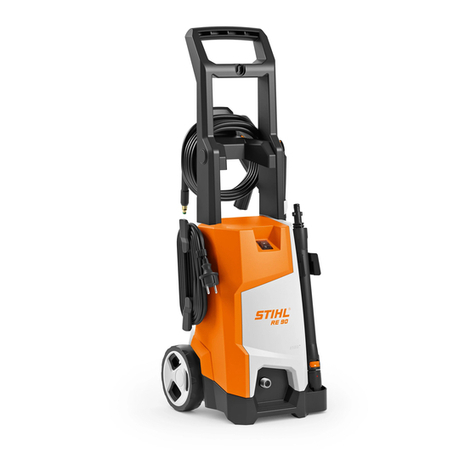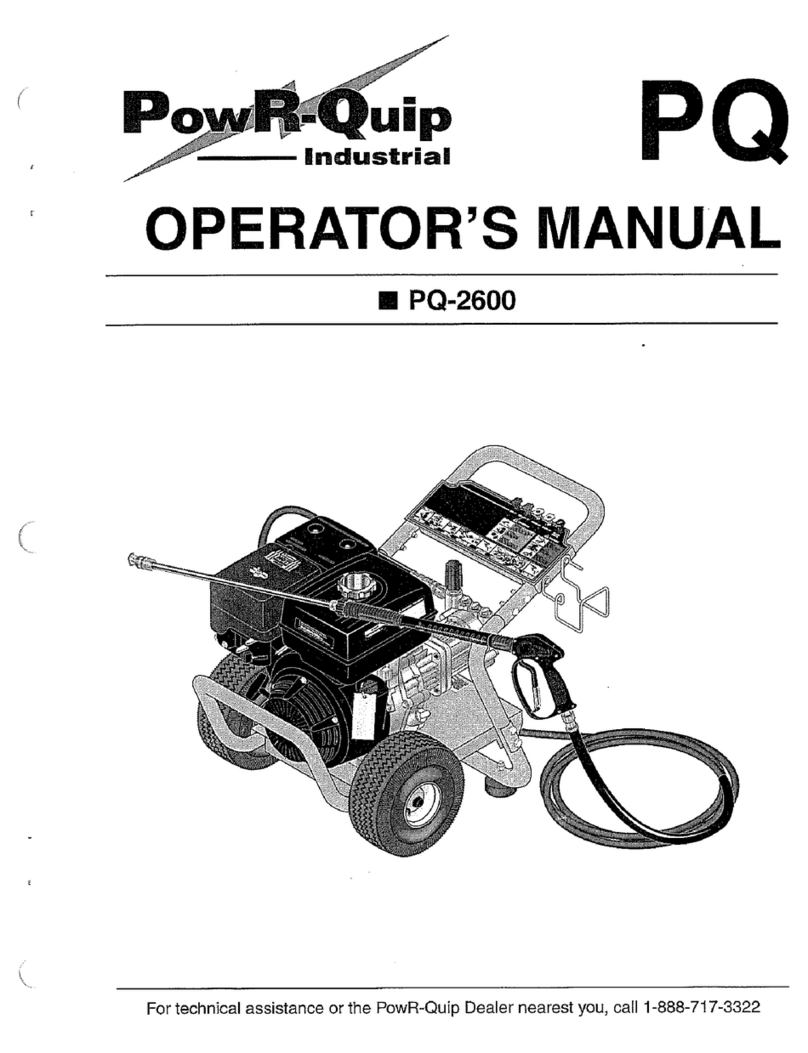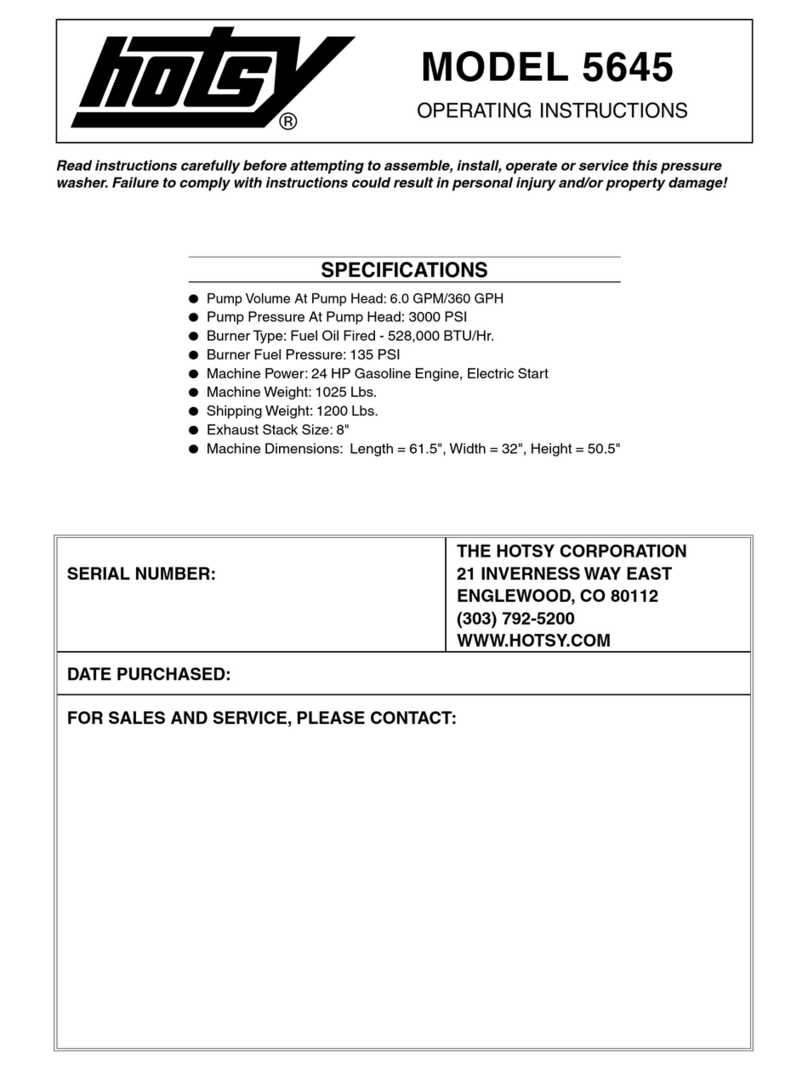
2
Table of Contents
Equipment Protection Quick Facts ........................................................................................................................................ 1
TABLE OF CONTENTS................................................................................................................................................2
ABOUT YOUR PRESSURE WASHER.........................................................................................................................4
SPECIFICATIONS ........................................................................................................................................................5
COMPONENT IDENTIFICATION..................................................................................................................................6
SAFETY ........................................................................................................................................................................7
Hazard Signal Word Definitions ............................................................................................................................................ 7
SAFETY LABELING.....................................................................................................................................................8
Safety Decal Locations ......................................................................................................................................................... 8
Safety Decals........................................................................................................................................................................ 9
INITIAL SET-UP..........................................................................................................................................................10
Step 1. Inspect & Unpack...................................................................................................................................................... 10
Step 2. Assembly................................................................................................................................................................... 12
Base Assembly ................................................................................................................................................................... 12
Install Battery (1577249 Only)............................................................................................................................................. 14
Step 3. Select Suitable Location........................................................................................................................................... 15
Moving and Handling .......................................................................................................................................................... 15
Outdoor Use Only ............................................................................................................................................................... 15
Install Spark Arrestor (if Required)...................................................................................................................................... 16
OPERATION ...............................................................................................................................................................17
Follow Safety Rules for Operation ....................................................................................................................................... 17
Preparing for Operation ........................................................................................................................................................ 18
Check/Add Oil to Pump....................................................................................................................................................... 18
Check/Add Engine Oil......................................................................................................................................................... 19
Inspect Fuel System/Check for Leaks................................................................................................................................. 20
Connect Hoses, Water Supply, and Spray Nozzle .............................................................................................................. 20
Prime the Water Supply......................................................................................................................................................... 22
Set Up for Chemical Spray (if desired)................................................................................................................................. 22
Start-Up Procedures.............................................................................................................................................................. 23
Start the Engine to Power the Pump................................................................................................................................... 23
Apply Cleaning Chemical (If Desired) ................................................................................................................................. 23
Begin High Pressure Spray................................................................................................................................................. 24
Shutdown ............................................................................................................................................................................... 25
STORAGE...................................................................................................................................................................26
Between-Use Storage............................................................................................................................................................ 26
Prepare Pressure Washer for Freezing Conditions............................................................................................................ 26
Prepare Engine for Long Term Storage............................................................................................................................... 27
Prepare Pressure Washer for Storage ................................................................................................................................. 27
MAINTENANCE & REPAIR........................................................................................................................................28
MAINTENANCE SCHEDULE SUMMARY..................................................................................................................28
DETAILED INSTRUCTIONS –MAINTENANCE & REPAIR ......................................................................................28
Follow Safety Rules ............................................................................................................................................................ 28
Keep Pressure Washer Clean............................................................................................................................................. 28




